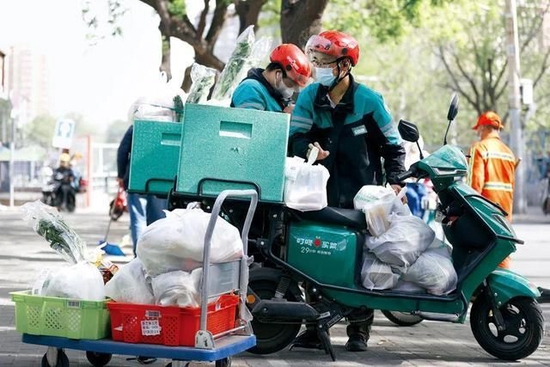
Author|
Editor | Tang Fei
During the New Year’s Day holiday that just passed, Zhang Yali, a girl living alone from Shenzhen, canceled her plan to travel to Sanya with her friends because she was worried that she would “recover Yang” if she went out. After changing hands, I bought a lot of fresh products on Pupu and Meituan. This time, it only took 15 minutes for Pupu and Meituan to complete the delivery.
For such a delivery speed, Zhang Yali told Value Planet that she is very satisfied. Because in December last year, local riders in Shenzhen were infected in a large area, the logistics efficiency was greatly reduced, and the Dingdong grocery shopping that I was used to before was unable to place an order. According to her observation, at present, Hema, Daily Youxian, and Dingdong Maicai have closed down in many areas of Shenzhen.
In desperation, she could only search for a large number of strategies for grabbing orders from online platforms. For example, the replenishment time of Dingdong Grocery is generally from 24:00 to 3:00 in the morning, and the best time to place an order is 6:40 in the morning. Grab specials.
In fact, whether consumers complain about the difficulty of placing an order, or a large number of strategies for grabbing orders on online platforms, the essence is related to the impact on the supply chain of fresh food e-commerce platforms under the epidemic.
Shenxian County, Shandong Province is known as “the largest vegetable county in China”, and the local area undertakes the supply of vegetables from many fresh food e-commerce platforms. However, Li Ziming, a local supplier responsible for supplying a certain fresh food platform, told us that although the local vegetable production did not experience a major decline last year, there were many problems in the entire distribution and sales process.
For example, after the full liberalization in December last year, many local farmers were infected and they were unable to go to the fields to receive goods. In addition to this, they also cannot find a driver for transportation. Obviously, under the background that the entire upstream supply chain cannot be guaranteed, fresh food e-commerce as an intermediate trading platform can only sell the original inventory that is not much left, which further aggravates the problem of “difficulty placing orders”.
Looking back at 2022, under the uncertainty brought about by the epidemic, consumers’ demand for orders from fresh food e-commerce platforms has increased significantly, and their dependence has never been higher. However, under this kind of dependence, not only the fresh food platforms represented by Daily Fresh are “retreating”, but also platforms like Pupu are constantly attacking the city.
So, what are the differences between the fresh food e-commerce industry in 2022 and the previous two years? What is the core of the future development of fresh food e-commerce?
The front warehouse model has reached a watershed
In July 2021, as Daily Youxian was exposed to a large number of layoffs, site closures, and arrears of a large number of suppliers, the stock price of a company with a market value of as high as 20 billion yuan also fell from 58.56 US dollars per share at the peak to $1.78/share (closing December 30, 2022).
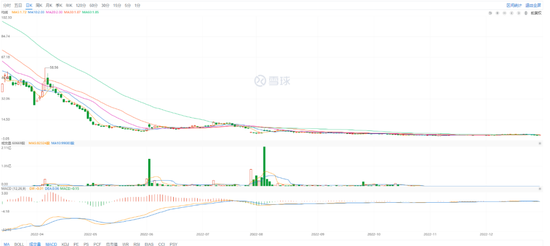
Source: Snowball
The chain reaction that followed was that the outside world had many doubts about the front warehouse model of the fresh food e-commerce platform.
Because for Daily Youxian and Dingdong Maicai, which also adopt the front warehouse model, both are facing problems of long-term losses, insufficient cash flow, and insolvency.
In terms of losses, the cumulative loss of Dingdong Maicai from 2019 to 2021 was 11.5 billion yuan, and the average single-season loss reached 960 million yuan. Although entering 2022, Dingdong Maicai has been reducing costs and increasing efficiency, but its losses in the first and second quarters are still 477 million yuan and 36 million yuan respectively. Daily Youxian’s losses in the four years from 2018 to 2021 were 2.232 billion yuan, 2.909 billion yuan, 1.649 billion yuan, and 3.85 billion yuan respectively, with a total loss of 10.64 billion yuan in the four years.
In terms of cash flow, although in the second quarter of last year, Dingdong Maicai achieved a net inflow of 217 million yuan, but considering that its single-quarter profit was too low, the capital market still did not buy it. After the financial report was released, its The stock price still ushered in a 1.8% decline.
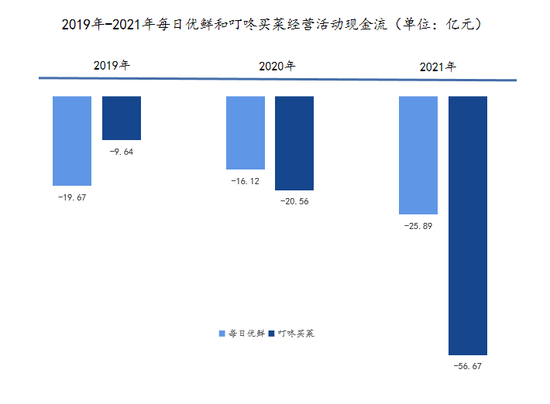
Data source: financial report
The bigger hidden danger is that as of June 30 last year, Dingdong Maicai’s current assets were 7.123 billion yuan, and its current liabilities were 7.941 billion yuan. The cash flow is obviously tight. The situation of Daily Fresh is even less optimistic. Its net cash flow from operating activities in 2021 will be -2.589 billion yuan, but the company’s total current liabilities during the same period will be as high as 3.2993 billion yuan. In the context of insolvency, how can Daily Youxian, which has only 55 people left, turn things around?
In fact, the root cause of these problems in the front warehouse model is that the upstream fresh products have low standardization, strong dispersion, high loss, and low gross profit. Supply chain integration is extremely difficult.
Wang Qiangqiang, who has been engaged in the vegetable and fruit wholesale business for many years, told us that the operation of fresh products is very difficult. Take apples as an example. At present, there are Shaanxi Red Fuji apples, Shandong Red Fuji apples, Sichuan Daliangshan apples, Xinjiang Aksu apples, Gansu Red Bull apples and so on. According to the fruit shape, size, and sweetness of apples, they are divided into primary fruit, secondary fruit, and secondary fruit.
Even apples from the same production area will have different tastes due to the influence of local accumulated temperature, precipitation, whether they are bagged, and the age of the fruit trees. This requires purchasers to have many years of fruit wholesale experience in order to be able to receive relatively good quality goods in the place of origin, so as not to be fooled by the local fruit agency.
In addition, in the process of purchasing fruits at the origin, sometimes the larger the purchase volume, the higher the price. For example, Wang Qiangqiang had previously purchased 200,000 catties of yellow peaches in Yimeng Mountain, Mengyin, Shandong Province. However, due to the heavy rain in Yimeng Mountain at that time, there were not many goods that really met his requirements. During the same period, other large wholesalers also went to the local area to purchase. Under the imbalance between supply and demand, the price of yellow peaches in Yimeng Mountain directly increased by 1 yuan per catty at that time.
In fact, several problems can be seen from Wang Qiangqiang’s words. First, due to the dispersion of fresh food production areas, the fresh food e-commerce platform needs to transfer goods from different production areas and properly store them in front warehouses distributed in various cities. The ensuing problem is the increase in loss and logistics costs.
With the increase in the number of operating SKUs, the cost of purchasing personnel, sorting personnel, cold storage, and supplier customer information that needs to be invested will also increase. In other words, for fresh food e-commerce platforms, it is difficult to reduce costs through economies of scale, and even the more types of goods, the higher the cost.
Second, although fresh products are just in demand, there are many purchase scenarios. For example, various large, medium and small supermarkets, vegetable markets, fruit wholesale markets, community vegetable stores, comprehensive e-commerce platforms, etc. distributed in cities.
In order to attract users and generate continuous repurchases, fresh food e-commerce platforms often launch activities such as full discounts and coupons. The launch of these activities has further reduced the already low gross profit margin, which explains why Dingdong Maicai and Daily Fresh have been losing money.
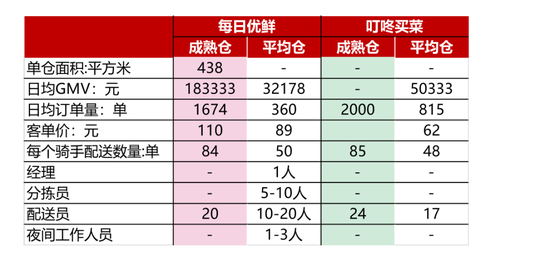
Data source: Dingdong Maicai, Daily Youxian prospectus
While the entire front warehouse model is being questioned by the outside world, some new changes have also appeared in the community fresh food e-commerce after the industry reshuffle in 2021. Sun Shaohua, the person in charge of a community group buying company in China, shared with us these new changes. First of all, small community group buying companies have closed down one after another, and the resources of the entire industry are more concentrated on top group buying. However, many top group buying companies no longer blindly pursue bigness, but instead concentrate more energy on urbanization in one or two cities.
Secondly, community e-commerce group buying no longer pursues more blindly in the operation of categories, but instead divides daily operating products into daily operation funds, welfare funds, and high-profit funds. At the same time, in order to reduce operating costs, we will also cooperate with suppliers in the place of origin through a drop shipping model.
The third is that enterprises pay more attention to private domain traffic rather than public domain traffic, and use these private domain traffic and high-quality products to complete the precipitation and fission of users, and finally form a virtuous circle.
These changes in community fresh food group buying have allowed some companies to gradually grow and develop. Can these experiences help fresh food e-commerce platforms reverse their losses?
Strategic shrinkage becomes the norm
In fact, compared with fresh food e-commerce in 2020 and 2021, the operating costs of fresh food e-commerce in 2022 will increase significantly.
Li Ziming said that the reasons for this high cost are reflected in many links. In the circulation link, not to mention cold chain logistics for the time being, normal freight is at least 40% higher than that in 2021. For example, during the lockdown period in Shanghai from April to June last year, they provided vegetables for a certain fresh food e-commerce platform. Even if closed-loop transportation is carried out throughout the whole process, centralized isolation is required for 7 days. This means that the truck driver cannot work for 7 days, and the truck driver will add these lost wages to the freight.
At the same time, another problem brought about by the different epidemic prevention and control policies in various places is that the time for drivers to get on and off the expressway is lengthened, which also increases the loss of fresh food. Take last year when they supplied goods to a certain fresh food e-commerce company in Beijing as an example. At that time, Beijing had a lot of restrictions on vehicles entering Beijing, which directly led to the increase of vegetables that could control the loss from 20% to 40%.
If there are still ways to solve the above problems, then the more troublesome problem for many fresh food e-commerce platforms is the temporary closure of the area where the warehouse is located. For example, a Chengdu client that Li Ziming once served, shortly after vegetables worth 500,000 yuan arrived at his warehouse, the local government suddenly announced temporary control.
Although some vegetables have entered the cold storage, due to the local lockdown period of more than 30 days, the vegetables entering the cold storage cannot be sold, and they are easy to go bad and deteriorate. And those vegetables that have not yet entered the cold storage have already rotted.
Based on the above reasons, many fresh food e-commerce companies are undergoing strategic contraction in 2022. For example, Dingdong Maicai has successively withdrawn from Xuancheng and Chuzhou in Anhui, Tangshan in Hebei, Zhongshan in Guangdong, Zhuhai, Tianjin, and Xiamen. Hema Neighborhood has successively withdrawn from Beijing, Xi’an, Chengdu, Wuhan and other markets, and is currently focusing on the Shanghai market.
Xingsheng Optimal has successively shut down the North China and Southeast regions, and withdrew from the stations in four provinces and cities including Henan, Shandong, Sichuan, and Chongqing. Jingxi Pinpin, a subsidiary of JD.com, closed down a large area in June. Meituan Youyou announced in October last year that it would upgrade its brand to “Mingrida Supermarket”. Difficulties in the group buying business.
Of course, strategic contraction is effective. Taking Dingdong Maicai as an example, Dingdong Maicai’s net loss in the first three quarters of last year was 857 million yuan, while the net loss in the same period in 2021 was as high as 5.333 billion yuan. And in the third quarter of last year, platform sales, marketing and fulfillment expenses fell by 70.3% and 30.9% year-on-year respectively. At the same time, the unit price per customer in this quarter increased by 25% compared with the same period in 2021.
In addition to reducing costs, each platform is also achieving efficiency gains in various ways. For example, many fresh food e-commerce platforms have set their sights on prefabricated vegetables. Among them, Hema has launched 18 different sets of “eight bowls” New Year’s dishes in different regions of the country.
Dingdong Maicai-related sales data shows that the food related to prepared dishes for the 2022 New Year’s Shopping Festival will increase by more than 400% year-on-year in 2021. Especially some dishes that are related to the New Year’s Eve dinner and have a good start, such as a “Steamed Meat Cake with Blossoming Fortune Yellow Croaker” sales increased by more than 980% month-on-month.
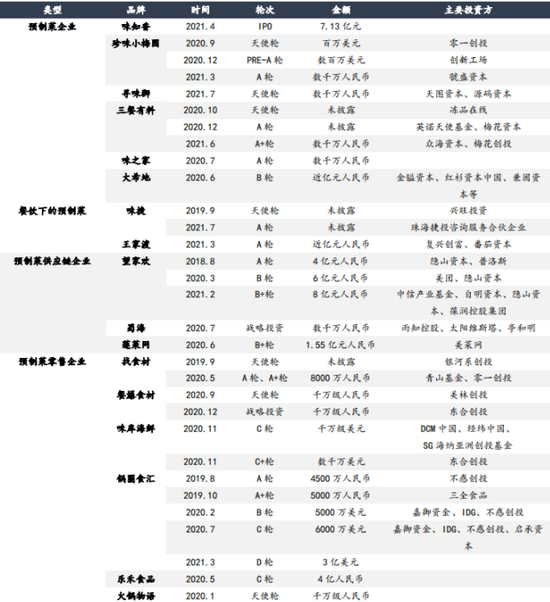
Source: Red Circle Network
But it needs to be pointed out that prefabricated dishes on the C side are more products under the epidemic control. With the current complete liberalization of epidemic prevention and control, it remains to be seen by the market whether prefabricated dishes will continue to be popular at the C end.
For the B-end with relatively high demand, the fresh food e-commerce platform has to compete with a number of prepared vegetable companies. In other words, whether pre-made dishes will become the “life-saving straw” of the fresh food e-commerce platform, I am afraid that there is still a question mark here.
Who are the future winners?
Strictly speaking, there are no real winners for fresh food e-commerce platforms in 2022.
Because under the premise that the entire supply chain cannot be guaranteed normally, everyone is just surviving in various ways to get through this cold winter. Although the current disruption of the epidemic to the supply chain has gradually faded away, two thorny issues still need to be resolved if we want to become a winner in this industry in the future.
On the one hand, how to regain the confidence of suppliers. Li Ziming told us that due to a large number of thunderstorms in community group buying in 2021 and daily Youxian thunderstorms in 2022, the problem that arises is that a large number of suppliers’ arrears have become dead debts, and some suppliers even cannot recover these We owe millions of dollars in debt, and now everyone is scared by these platforms. If you cooperate with these fresh food e-commerce companies, you will directly ask for cash in stock, otherwise they will not supply.
Obviously, under the supplier’s request, the fresh food e-commerce platform must have a large amount of cash flow in its hands and complete the turnover of goods as soon as possible. Otherwise, the fresh food e-commerce platform will easily fall into the predicament that the number of SKUs will decrease and the number of users will be lost.
Another aspect is how to better control loss. In fact, after several years of development, the fresh food e-commerce platform has formed complete experience in the update and operation of daily products and the distribution of downstream users. And if the industry wants to achieve real profitability, the competition is who can control the loss lower. Because only in this way can the overall cost really come down.
Of course, this process of change also means that in the future fresh food e-commerce platforms will usher in a real reshuffle just like community e-commerce group buying, and industry resources will increasingly be concentrated in truly capable companies.
*At the request of interviewees, Zhang Yali, Li Ziming, and Wang Qiangqiang are all pseudonyms in this article.
*This article is written based on public information and is for information exchange only, and does not constitute any investment advice

(Disclaimer: This article only represents the author’s point of view, not the position of Sina.com.)
This article is reproduced from: https://finance.sina.com.cn/tech/csj/2023-01-06/doc-imxzfpwm5615637.shtml
This site is only for collection, and the copyright belongs to the original author.